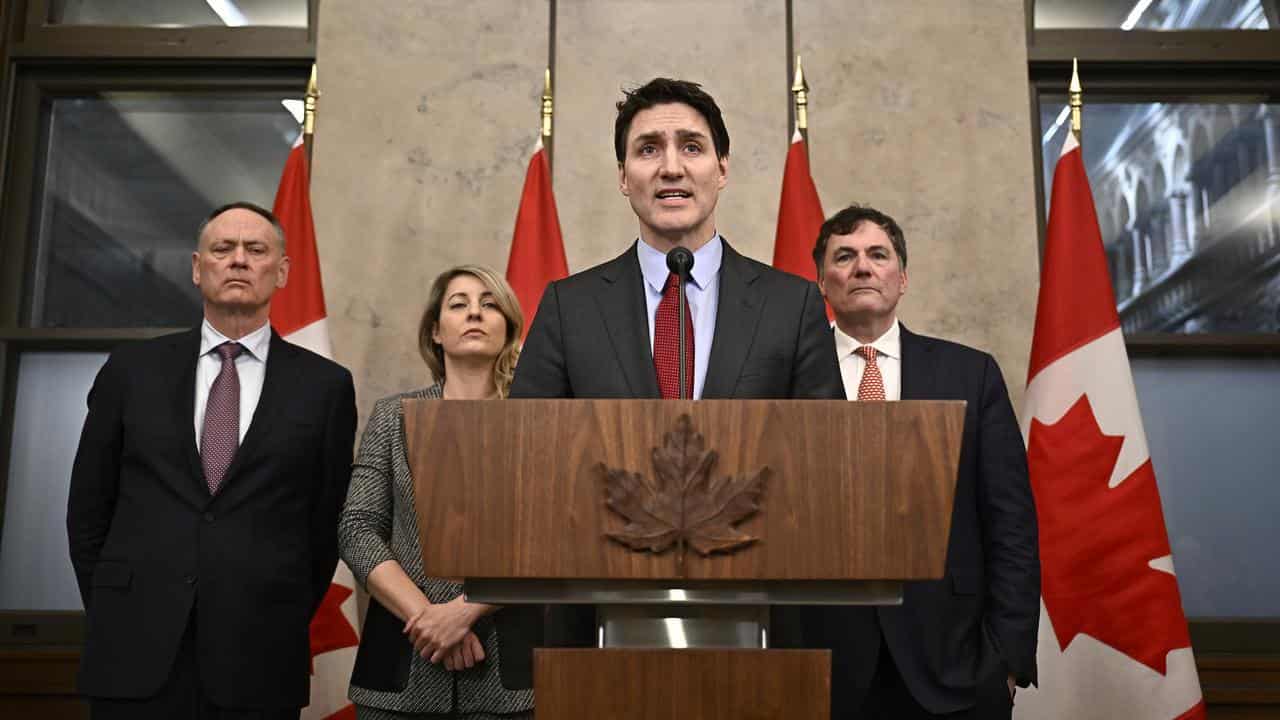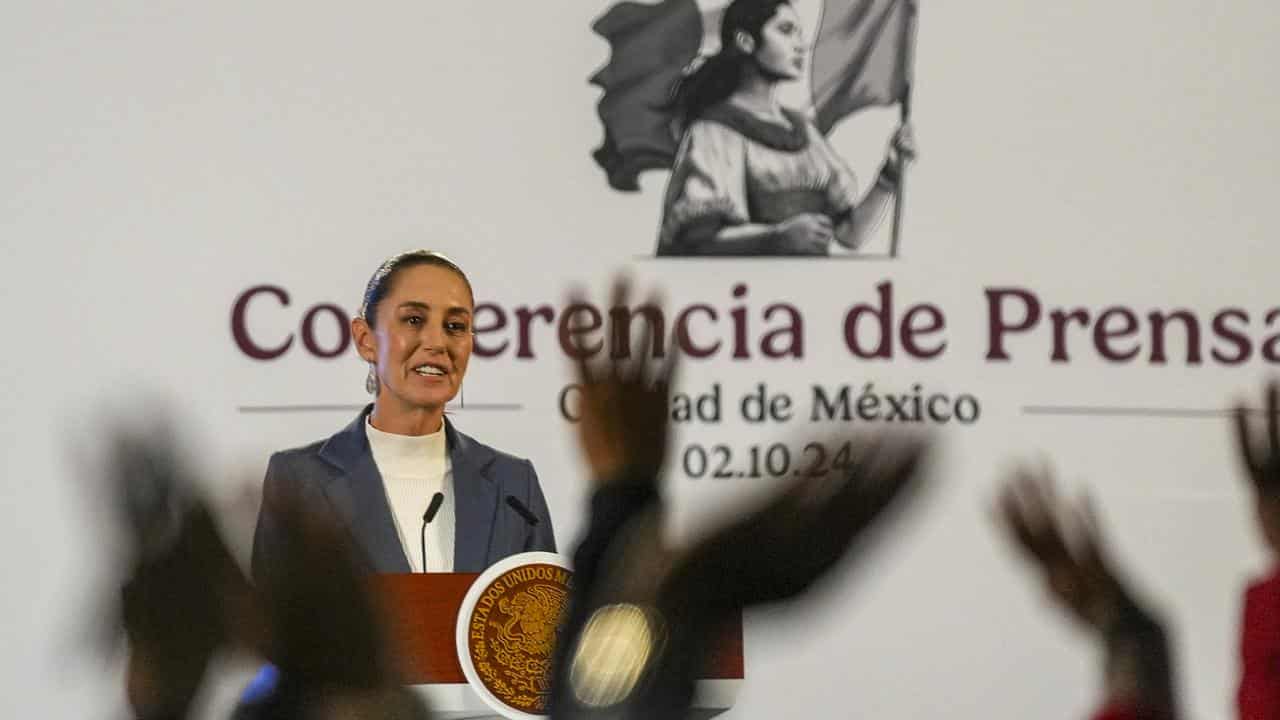
Canada and Mexico have responded in kind to President Donald Trump's order to impose to impose 25 per cent tariffs on Canadian and Mexican imports to the US.
Prime Minister Justin Trudeau says Canada will impose 25 per cent tariffs on $C155 billion ($A170.8 billion) of US goods in response to the White House decision announced on Saturday.
The tariffs risk an economic standoff with America's two largest trading partners Mexico and Canada, upending a decades-old trade relationship with the possibility of harsh reprisals.

Trudeau told a news conference $C30 billion worth of trade in US alcohol and fruit would take effect on Tuesday when the US tariffs kick off.
He opened his address to Canadians with a message aimed at US consumers.
"It will have real consequences for you, the American people," he said, saying it would result in higher prices on groceries and other goods," he said.
"If President Trump wants to usher in a new golden age for the United States, the better path is to partner with Canada, not to punish us."
Trudeau encouraged Canadians to buy Canadian products and holiday at home rather than in the US.
He said some non-tariff measures, including some relating to critical minerals, energy procurement and other partnerships were being looked at.
Trudeau channelled the views of many Canadians who were feeling betrayed by their neighbour and long-time ally, reminding Americans that Canadian troops fought alongside them in Afghanistan.
"The actions taken today by the White House split us apart instead of bringing us together," he said, warning it could bring about "dark times" for many people.
Mexican President Claudia Sheinbaum also said she had instructed her economy secretary to implement a response that includes retaliatory tariffs and other measures in defence of Mexico's interests.

"We categorically reject the White House's slander that the Mexican government has alliances with criminal organisations, as well as any intention of meddling in our territory," she wrote in a post on X.
"If the United States government and its agencies wanted to address the serious fentanyl consumption in their country, they could fight the sale of drugs on the streets of their major cities, which they don't do and the laundering of money that this illegal activity generates that has done so much harm to its population," she wrote.
Trump's order includes a mechanism to escalate the rates if the countries retaliate against the US.
The tariffs could cause inflation to significantly worsen, possibly eroding voters' trust that Trump could deliver his promise to lower the prices of groceries, gas, housing, vehicles and other goods.
Trump declared an economic emergency in order to place duties of 10 per cent on all imports from China and 25 per cent on imports from Mexico and Canada.
Energy imported from Canada, including oil, natural gas and electricity, would be taxed at a 10 per cent.
It's widely feared the tariffs could sabotage economic growth.
The premier of the Canadian province of British Columbia, David Eby, called on people to stop buying liquor from US "red" states and remove American alcohol brands from government store shelves.
Eby deemed the Trump administration's decision as "a declaration of economic war against a trusted ally and friend".
"Effective today, I have directed BC liquor sales to immediately stop buying American liquor from red states," he said.
"Liquor store employees will be removing the most popular of these brands from government store shelves."
A senior US administration official, insisting on anonymity to brief reporters, said the lower rate on energy reflected a desire to minimise any disruptive increases in the price of gas or utilities.
with AP




